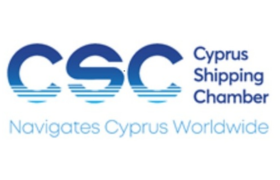Preliminary findings allude to a range of natural gas volumes of 3.6 trillion cubic feet (tcf) to 6 tcf (102 bcm to 170 bcm) with a gross mean of 5 tcf (142 bcm), less than earlier tests had suggested. Things though are not as bleak as they were portrayed. One may wonder though, why was the gas quantity originally overestimated? There are several possible reasons. We need only note that the reservoir resides at a water depth of about 1,600 m of seawater and a total depth of about 7,200 m.
Not surprisingly, interpreting invisible findings is often a risky, costly and tedious business. In order to reach credible estimates, an offshore operator (such as Noble Energy) collects data using various techniques with the ultimate purpose of minimising uncertainties while understanding the characteristics of a hydrocarbons field as exhaustively as possible. For instance, data are collected using geophysical methods, such as seismic and magnetic surveys, linewire logs while drilling, such as electric conductivity and acoustic measurements and many others (e.g., pressures, temperatures, permeability- ability of hydrocarbons to flow, etc.). Hence, the less detailed and narrower the data, the higher the degree of uncertainty of the gas estimates. Once an appraisal well is drilled, though, more data can be fed into the existing reservoir model which helps narrow down even further the level of uncertainty. A major factor believed to explain the downsizing of the gas volume is the thickness of the reservoir (net pay thickness).
While exploratory well A-1 encountered a net pay of 94 m, appraisal well A-2 identified a net pay of about 40 m. Logically, halving the reservoir thickness shrinks the gas quantities that the formation can conceal. It also turned out that the gas formation is more complex than originally thought. According to published sources, the reservoir is characterised by three transverse faults which divide it into four compartments. Geologically, there is a strong probability that the reservoir is not a uniform structure but subject to discontinuities which obstruct the uninterrupted flow of gas. This is why the minister of energy unveiled the intention of the Noble consortium to drill another appraisal well. Evidently, the appraisal process is still a work in progress.
There is also the need to process the wealth of data gathered during the first appraisal well and update the prevailing geological and other reservoir models. Variations in rock porosity (capacity of reservoir to hold hydrocarbon quantities) can also play an important role regarding gas volumes. Seismic uncertainties could also add to the explanation as to why the gas volumes were less than first expected. Despite the effectiveness of 3D seismic surveys in detecting the presence of a geological cap within which hydrocarbons could lie, imperfections still cast doubts as to the level of accuracy of the technique.
Then there is the possibility of a fault impermeable seal which might be held accountable for permitting some of the natural gas to escape from the reservoir and migrate to different geological strata. The already detected transverse faults are likely to blame. Geological data indicate that this seal is made up of Messinian evaporites (salt layers) which formed some 60 million years ago. Owing to their small size, gas pockets which form from migrating hydrocarbons may be uneconomical to extract. In addition, the accuracy of linewire logs diminishes with distance. In aggregate, the first exploratory well gas estimates are subject to considerable deviations.
Good news also surrounds the Aphrodite gas field. Usually companies resort to further appraisal wells when there are strong indications as to the existence of additional gas (also known as reserves growth). It is also of paramount importance that the gas field can be converted from a resource into a proved reserve (with a 90 per cent probability of being extracted). Furthermore, 3D seismic acquisitions conducted on behalf of Noble in Block 12 have identified some eight other hydrocarbon plays (prospective gas fields) some of which are believed to contain about 1 to 2 tcf of natural gas. Another positive development is the fact the Aphrodite field consists of dry gas (about 98 per cent methane) which requires minimal processing before being pumped onshore.
Whatever the outcome, the Cypriot exclusive economic zone remains largely unexplored. More promising hydrocarbon discoveries are in the pipeline. The recent discovery of oil offshore Ashdod, in Israel, adds to the climate of euphoria. Tracing oil in the Cypriot EEZ is probably a matter of time. Being second-time lucky will forever alter Cyprus’s future and will turn the tide in our favour. In the meantime, positive thinking and patience will prove invaluable.
Constantinos Hadjistassou is lecturer in Marine Hydrocarbon Technologies at the University of Nicosia and partner at Energy Sequel (www.energysequel.com).













